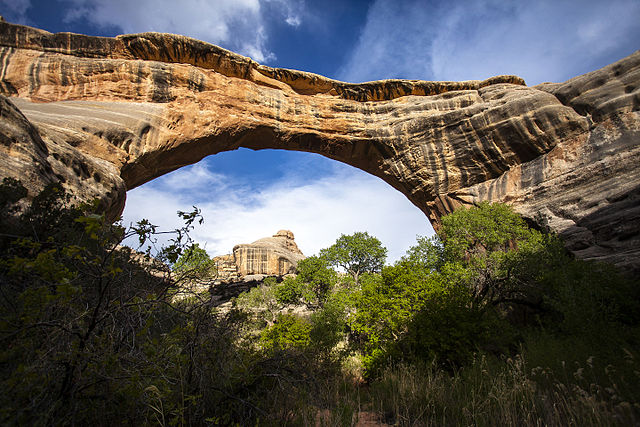Dispersive phase
Introduction
The Dispersive phase is part of Tas Walker's flood model. It is the second phase under the retreating, or Recessive, stage, following the abative, or Sheet-Flow, phase.[1]
Characteristics
A table of the Characteristics of Tas Walker's Dispersive phase of the larger Recessive stage
| Duration | Events of Geologic Significance | Some Characteristic Geologic Features | Evolutionary Correspondence | Synonyms |
|---|---|---|---|---|
| 110 days[2] | "Waters continue to move off the land as ocean basins reach final size. Water sheets divide into separate watercourses many times larger than present flows, carving out canyons and river valleys."[3] | "Local scale structures in separate watercourses and lakes, minimal disturbance, plastic deformation, abundant signs of death. Channel erosion of landscape. No signs of terrestrial life."[4] | Approximately during the Cenozoic[5] | Channelized flow,[6] channelized erosion,[7] channelized runoff,[8] channelized phase[9] |
Geological Examples
Natural Arches and Bridges
According to Michael Oard, “Large natural bridges and arches imply more rapid erosion—the type of erosion that would have occurred during the Retreating Stage of the Flood. Arches would have formed during either the Sheet-flow or Channelized-flow Phase of the Retreating Stage, while natural bridges probably formed during the Channelized Phase.”[10]
Pediments
Oard states, "Most pediments are found in valleys that were rapidly carved during the channelized phase of the Flood." He continues, "the original planation surface can still be recognized by mentally filling in the channels and reconnecting the remaining undissected surfaces." Oard concludes, "Pediments were carved very late in Noah’s Flood when deep floodwater was flowing down valleys on its way to the oceans. The thin capping of rounded rock was deposited as the water drained and gradually lost its momentum. The multiple pediments and pediment remnants that are seen in some valleys can be explained by pulses of valley erosion late in the runoff. They further eroded some pediments leaving a few remnants and sometimes overlaying new pediments. Figure 5 is a schematic on how pediments formed rapidly by fast eroding flows along the valley late in the Flood.[11]
Discussion
Michael Oard states, “Especially troubling to me is that Walker’s biblical geological model is summarily rejected.6,7 His model has powerful explanatory value. He classifies the Flood into stages and phases, proposing the Genesis Flood was like a flash flood that can be divided into two main stages, the Inundatory and Recessive Stage. These two stages he subdivides into phases. He proposes that when the mechanism of the Flood was unleashed the water rose quickly (the Eruptive Phase). Then it continued to rise slowly or ‘prevailed’ (the Ascending Phase). At the peak of the Flood the waters began to recede and rush off of the continents. At first they formed wide currents (the Abative or Sheet Flow Phase) which eventually transformed into more narrow currents (the Dispersive or Channelized Flow Phase). Geomorphology, the study of the earth’s surface, gives supportive evidence for a sequence of sheet flow followed by channelized flow.8,9”
References
| ||||||||||||||||||||
- ↑ https://creation.com/images/pdfs/tj/j29_1/j29_1_30-32.pdf
- ↑ https://creation.com/images/pdfs/articles/9240-geological_model_bw.pdf
- ↑ https://creation.com/images/pdfs/articles/9240-geological_model_bw.pdf
- ↑ https://creation.com/images/pdfs/articles/9240-geological_model_bw.pdf
- ↑ https://creation.com/interpreting-the-geology-of-central-australia
- ↑ https://creation.com/search#gsc.tab=0&gsc.q=channelized%20flow&gsc.page=1
- ↑ https://creation.com/search#gsc.tab=0&gsc.q=channelized%20erosion&gsc.page=1
- ↑ https://creation.com/search#gsc.tab=0&gsc.q=channelized%20runoff&gsc.page=1
- ↑ https://creation.com/search#gsc.tab=0&gsc.q=channelized%20phase&gsc.page=1
- ↑ https://creation.com/rock-arches-and-the-flood
- ↑ https://creation.com/pediments

